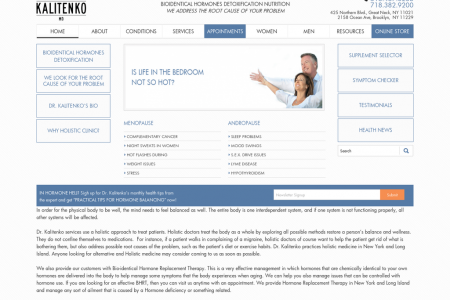
The Future of Nursing
THE FUTURE OF NURSING The nursing profession has the potential capacity to implement wide-reaching changes in the health care system. WITH MORE THAN 3 MILLION MEMBERS, NURSES REPRESENT THE LARGEST SEGMENT OF THE U.S. HEALTH CARE WORKFORCE. SETTINGS WHERE NURSES PRACTICE 10.5% 7.8% 6.4% 5.3% 3.8% AMBULATORY COMMUNITY & HOMES LONG-TERM SCHOOLS SETTINGS PUBLIC HEALTH CARE FACILITIES CENTERS 62.2% HOSPITALS ROLES AND RESPONSIBILITIES DIRECT PATIENT CARE, COORDINATE CARE RESEARCH AND EVALUATE teach and counsel patients and advocate for patients more effective ways of caring for patients The majority of nurses' time is being consumed by documentation, medication administration, and communication regarding the patient, and yet, LESS THAN 20% of nursing practice time was devoted specifically to direct to patient care. TRANSFORMING PRACTICE NURSES AND PRIMARY CARE Nurses provide primary care services across the spectrum of health care settings. The range of possibilities for nurses providing primary care is significant, and their capacity for filling these roles is not always recognized. Numbers of nurse practitioners and physician assistants are steadily Numbers of medical students and residents entering primary care are INCREASING. DECREASING. 0.48 0.5- 0.4 - 0.3 - 0.23 0.2 - 1995 2009 BETWEEN 1995 AND 2009, THE NUMBER OF NURSE PRACTITIONERS PER PRIMARY A 2008 SURVEY OF MEDICAL STUDENTS FOUND CARE MD MORE THAN DOUBLED, ONLY 2% PLANNED CAREERS from 0.23 to 0.48. The number of physician assistants per primary care MD also increased. IN GENERAL INTERNAL MEDICINE. IT IS POSSIBLE TO INCREASE THE SUPPLY OF BOTH NPs AND PAS IN A RELATIVELY SHORT AMOUNT OF TIME, HELPING TO MEET AN INCREASED DEMAND FOR CARE, INCLUDING CARING FOR UP TO 32 MILLION PREVIOUSLY UNINSURED AMERICANS. NURSES SHOULD PRACTICE TO THE FULL EXTENT OF THEIR EDUCATION AND TRAINING. REGULATIONS THAT DEFINE SCOPE-OF-PRACTICE Limitations vary widely by state based on the political decisions of the state in which they work. + KANSAS CITY, KANSAS KANSAS CITY, MISSOURI The same nurse practitioner would be required to have more physician oversight in Kansas City, Missouri, than across the state line in Kansas City, Kansas. TRANSFORMING EDUCATION To meet health care's growing demands, nurses must be competent in several disciplines, such as leadership, system improvement, research, teamwork and collaboration and public health. Nurses are also expanding into technology and information management roles. EDUCATION PATHWAY A seamless transition to higher degree programs. TYPE OF CARE PROVIDER TYPE OF DEGREE NURSING CARE Licensed Practical Nurse/ Licensed Vocational Nurse (LPN/LNV) PROVIDERS Nursing Assistant (NA) REGISTERED Associate Degree (ADN) or a Diploma in Nursing NURSES Baccalaureate Degree (BSN) Master's Degree (MSN/MS) Doctor of Philosophy (PhD) or Doctor of Nursing Practice (DNP) Degrees ADVANCED PRACTICE Nurse Practitioners (NPs) REGISTERED NURSES Clinical Nurse Specialists (CNSS) Certified Registered Nurse Anesthetists (CRNAS) Certified Nurse Midwives (CNMS) 2. 10 PREPARATION TIME (YEARS) NURSES AT ALL LEVELS SHOULD CONTINUE TO ENGAGE IN LIFELONG LEARNING. HIGHER ED GOALS INCREASE THE NUMBER OF 80% 80 - HOW: NURSES WITH • Tuition reimbursement 70 -- BACCALAUREATE • Scholarships and loan forgiveness • Increase Higher Ed faculty · Expand clinical partnerships DEGREES FROM 50% 50% TO 80% BY 2020. 2010 2020 DOUBLE THE NUMBER OF NURSES WITH A DOCTORAL DEGREE ALTHOUGH 13% OF NURSES hold a graduate degree, fewer than 1 percent (28,369 nurses) BY 2020. have a doctoral degree in nursing or a nursing-related field. TRANSFORMING LEADERSHIP THE NURSING PROFESSION MUST PRODUCE LEADERS FROM THE BEDSIDE TO THE BOARDROOM. NURSES MUST SEE THEMSELVES AS LEADERS Leadership that involves working with others as full partners with mutual respect and collaboration is needed and has been associated with: IMPROVED TEAMWORK COST SAVINGS INCREASED JOB SATISFACTION and patient outcomes and a reduction in medical errors and retention among nurses UNDERREPRESENTED ON INSTITUTION AND HOSPITAL BOARDS A recent survey have found that nurses are underrepresented... IN HOSPITALS AND HEALTH SYSTEMS IN COMMUNITY HEALTH SYSTEMS ONLY 0.8% ONLY 2.3% of voting board members in institutions and of nurses occupied seats on hospitals were chief nursing officers (CNOS) institution and hospital boards COMPARED WITH 5.1% COMPARED WITH 22.61% who were vice presidents for medical affairs who were physicians NURSES SHOULD BE PREPARED TO LEAD CHANGE TO ADVANCE HEALTH. FOR MORE INFORMATION, VISIT Www.IOM.EDU/NURSING SOURCES INSTITUTE OF MEDICINE IOM (Institute of Medicine). 2011. The Future of Nursing: Leading Change, Advancing Health. OF THE NATIONAL ACADEMES Washington, DC: The National Academies Press. Advising the nation • Improving health
The Future of Nursing
Source
http://www.i...EC-11.aspxCategory
HealthGet a Quote












